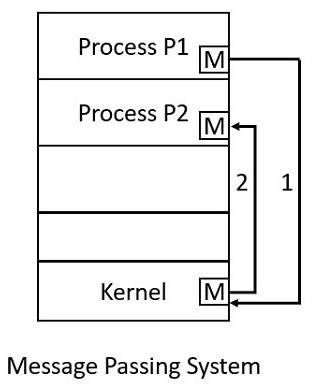
 Data Structure
Data Structure Networking
Networking RDBMS
RDBMS Operating System
Operating System Java
Java MS Excel
MS Excel iOS
iOS HTML
HTML CSS
CSS Android
Android Python
Python C Programming
C Programming C++
C++ C#
C# MongoDB
MongoDB MySQL
MySQL Javascript
Javascript PHP
PHP
- Selected Reading
- UPSC IAS Exams Notes
- Developer's Best Practices
- Questions and Answers
- Effective Resume Writing
- HR Interview Questions
- Computer Glossary
- Who is Who
What is message passing technique in OS?
Message Passing provides a mechanism to allow processes to communicate and to synchronize their actions without sharing the same address space.
For example − chat programs on World Wide Web.
Now let us discuss the message passing step by step.
Step 1 − Message passing provides two operations which are as follows −
Send message
Receive message
Messages sent by a process can be either fixed or variable size.
Step 2 − For fixed size messages the system level implementation is straight forward. It makes the task of programming more difficult.
Step 3 − The variable sized messages require a more system level implementation but the programming task becomes simpler.
Step 4 − If process P1 and P2 want to communicate they need to send a message to and receive a message from each other that means here a communication link exists between them.
Step 5 − Methods for logically implementing a link and the send() and receive() operations.
Given below is the structure of message passing technique −

Characteristics
The characteristics of Message passing model are as follows −
Mainly the message passing is used for communication.
It is used in distributed environments where the communicating processes are present on remote machines which are connected with the help of a network.
Here no code is required because the message passing facility provides a mechanism for communication and synchronization of actions that are performed by the communicating processes.
Message passing is a time consuming process because it is implemented through kernel (system calls).
It is useful for sharing small amounts of data so that conflicts need not occur.
In message passing the communication is slower when compared to shared memory technique.

